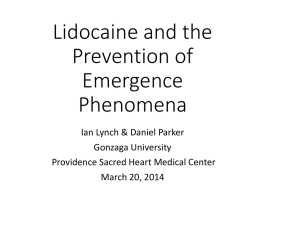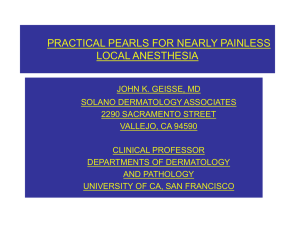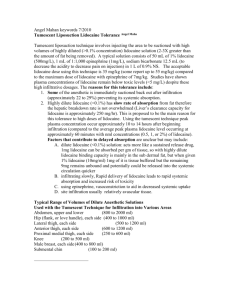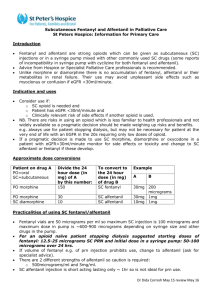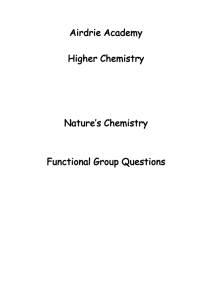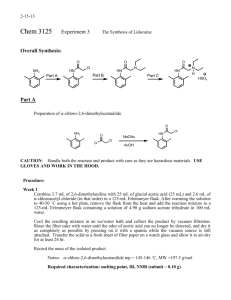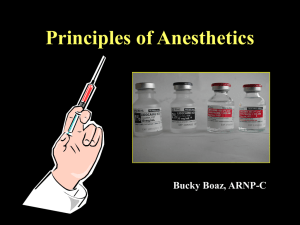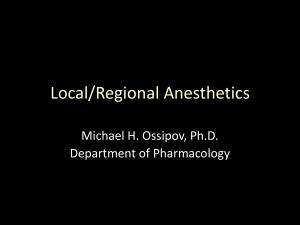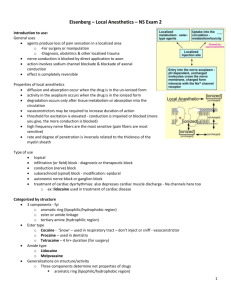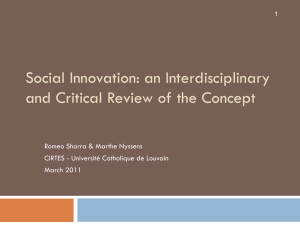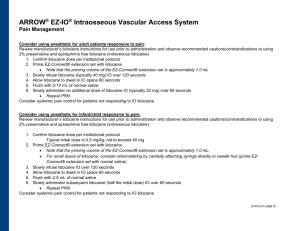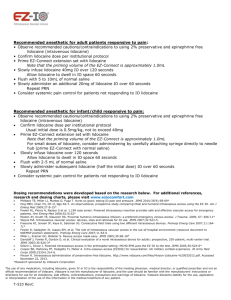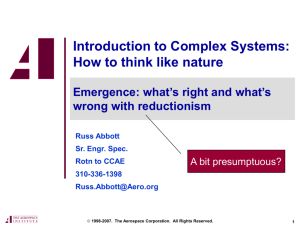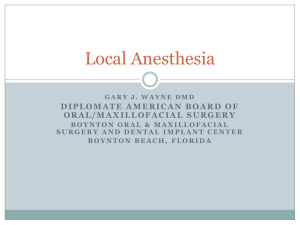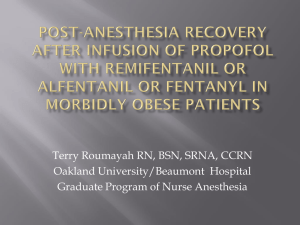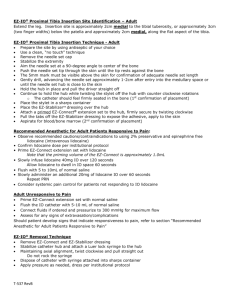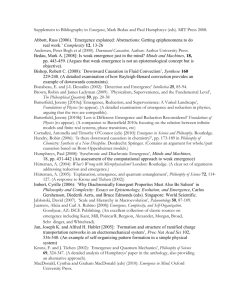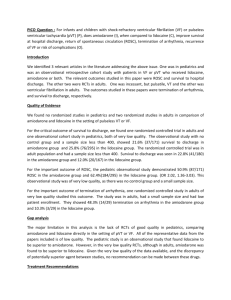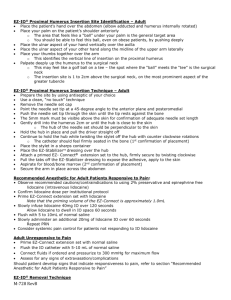Comparison in Effect of Intravenous Alfentanil and Lidocaine on
advertisement
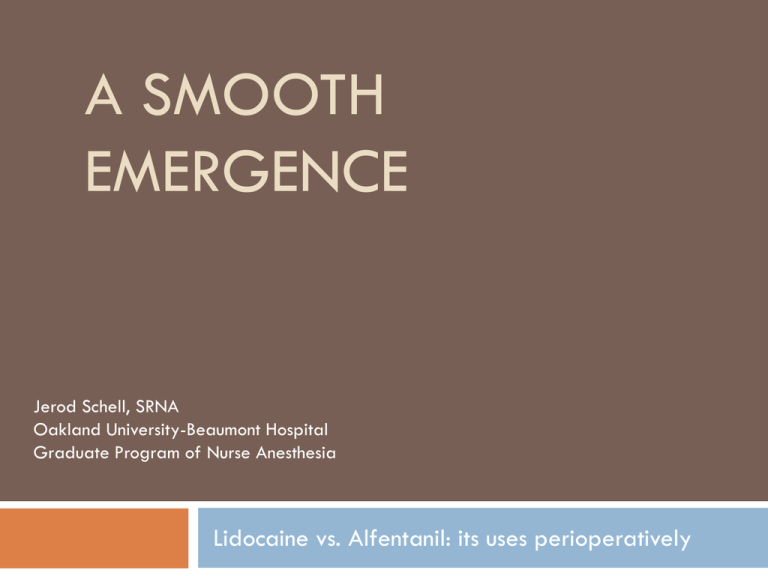
A SMOOTH EMERGENCE Jerod Schell, SRNA Oakland University-Beaumont Hospital Graduate Program of Nurse Anesthesia Lidocaine vs. Alfentanil: its uses perioperatively Why so concerned? What is the incidence of coughing on emergence from general anesthesia (GA) with an endotracheal tube?? Adverse side effects: HTN, tachycardia, tachyarrhythmia, ICP, IOP to name a few… Current methods for a smooth emergence = deep extubation, lidocaine jelly, LITA, short acting opioids. Research Study Info: Sadegi, M., Firozian, A., Ghafari, M.H. and Esfehani, F. (2008). Comparison in Effect of Intravenous Alfentanil and Lidocaine on Airway-Circulatory Reflexes during Extubation. International Journal of Pharmacology. 4(3). 223226. Dr. Ali Shariati Hospital, Medical Sciences/University of Tehran, Iran. Materials with Inclusion/Exclusion: RCT, double-blind study Female patients undergoing Cesarean Section with ETT GA. Ages 18-35 ASA I or II ---------------------------------------------------------------- Respiratory Disease, recent URI, previous laryngeal pathology or surgery, CAD, HTN (taking cardiac meds), smokers, opioid addiction, local anesthetic allergy – All Excluded. Methods: 1) 2) 3) 4) 5) Standard Induction using Thiopental and Succinylcholine 1.5 mg/kg. Used cuffed 7.0 mm OET, inflated with 2 ml greater than minimal leak pressure GA with Isoflurane at 1 MAC before delivery and 0.5 MAC after, with Oxygen and Nitrous Oxide (50%). Muscle relaxant sustained with Atracurium then IV morphine given after birth. After delivery, anesthetic gases turned off, oropharynx suctioned then 100% oxygen delivered for remainder of case. Then…… Now the actual experiment… 1) 2) “Randomly generated computer assignment” 15 mcg/kg Alfentanil -or1.5 mg/kg 2% Lidocaine IV Anesthetists would administer the given dose after return of spontaneous respiration, then after 2 minutes the patient was extubated. What was measured? Systolic and Diastolic BP Heart Rate Cough: yes or no. -Hemodynamics measured 2 minutes after the end of surgery and served as baseline values Then re-assessments 2 minutes after study drug given and 1 minute after extubation with comparisons made. Coughing Statistics Hemodynamic Statistics Statistically significant data for both categories except baseline values. Statistical analysis Distribution was checked by Kolmogorov Test Statistical comparison by T-test, Mann-Whitney Utest, and Chi-square Test. Significant when P <.05, two tailed. How were subjects treated?? Narcotics and Lidocaine are both used in practice today, merely a comparison to current acceptable therapies. Typically do not have scheduled Cesarean Sections with a GETA… Study Notes: Discussion No patients excluded No laryngospasm or bronchospasm Negative effects avoided: -Stress reactions -Intracranial, Intrabdominal pressure -Avoid bleeding or severe injury during emergence. Study Notes (cont.) Controlled timing very well. Previous Lidocaine studies cannot statistically prove an improved emergence, only clinical experience with practitioners. Narcotic delay?? -No clinically significant delay in emergence with narcotic use. Study Limitations: Narrow patient population Healthy individuals Not all institutions use Alfentanil Can we use this tomorrow? Alfentanil = opioid agonist -Precaution with Respiratory disease, can use as surgical anesthesia or analgesia. Cost: 500 mcg/ml = $5.26 per ml. - about $10 per 70 kg patient. The Art of Anesthesia…. Emergence
